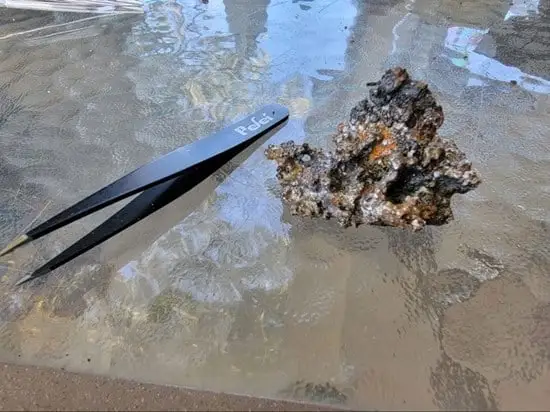Silver Bullet Mines discovers palladium and gold in its silver production at its Buckeye Mine
I really like the story behind the company I’m going to discuss today. Now don’t confuse this with investment advice or a recommendation to rush out and buy the stock. I’m simply talking about the history of the property and the derivation of the company name as it relates to its flagship mining asset. The company is Silver Bullet Mines Corp. (TSXV: SBMI | OTCQB: SBMCF) and it actually has a traceable history to the Lone Ranger and his calling card, the silver bullet. If you want more fun and interesting historical facts about the company’s flagship Black Diamond Property please go and have a read here. If that has no appeal to you then no worries, we’ll get on with what’s attracting investor interest today.
As interesting as the back story is, the latest news out of Silver Bullet has far more appeal from an investor’s perspective, although a little operational background may be useful here. The Black Diamond property is located in Gila County, Arizona about ten miles north of the town of Globe and is centered on the mining area referred to as the Richmond Basin. The property covers approximately 4,793 acres (1,940 ha) and is host to several past producing underground primary silver mines. The Buckeye patent is contained within the east central part of the Black Diamond claim block and hosts the past producing Buckeye Mine, which was re-opened and test mined in 2017. Fast forward to July, 2022 and Silver Bullet announced it had successfully completed commissioning of its wholly owned 125 MTPD state of the art mill. By mid-July the Company announced it had successfully produced silver, which is remarkable considering they spent less than C$3 million building this fully functional mill.
However, after Silver Bullet processed roughly 60 tons of Buckeye Mine material at its 100%-owned mill, they encountered challenges in pouring proper silver dore bars to satisfy the outstanding sample run order. Further review of what caused these challenges turned into the kind of problem we all wished we could have. To help identify the possible source of the issues, the Company sent samples from its concentrates to Lone Pine Analytical, a third-party lab, for further analysis. That analysis revealed significant quantities of palladium and gold in the mineralized material. Like I said, as far as problems go, that’s a pretty good one to encounter.
For reference below, note that one ppm (part per million) is equivalent to one gram per ton and there are 28.34 grams in one ounce.

Source: Silver Bullet Mines Inc. September 26, 2022 Press Release
Early on Silver Bullet made the decision to build their mill in Arizona to high standards, and as a result they were able to immediately recognize there were significant amounts of elements other than silver in this material. Standard exploration techniques would not have found the gold or palladium without the expenditure of millions of exploration dollars, thus the company was able to achieve this more quickly and for much less money. Silver Bullet has found a potential buyer for the concentrates, who is likely able to process the palladium in addition to the gold and silver, but before making final decisions the company is waiting on further assay data and input from metallurgists, engineers and others.
Another exciting aspect about these newly discovered materials, aside from the fact that both gold and palladium sell for a significantly higher price than silver, is that palladium, platinum and most of the other materials identified above are on the critical minerals list. Readers can correct me if I’m wrong, but I believe the only significant producer of palladium in the U.S. is Sibanye-Stillwater in Montana, so this has broad reaching ramifications as “on-shoring” and security of supply increase in importance. There is anecdotal evidence of Pt-Pd production as a by-product of porphyry mining in the Globe area which could be a possible game-changer, not just for Silver Bullet but for mining in Arizona. And we all know how a rising tide lifts all boats when a specific geographic region becomes the focal point for an area play. Even better if it’s a critical mineral.
It’s exciting times for the team at Silver Bullet Mines. Stumbling upon high values minerals contained in your already high grade silver (a recent grab sample returned one assay graded 2,214.4 oz/t silver and another at 2,363.8 oz/t silver) is about as good as it gets for a junior miner. With a market cap of just under C$13 million it will be interesting to see how much cash flow the company can start generating when it figures out what to do with those pesky but incredibly valuable bonus materials.




